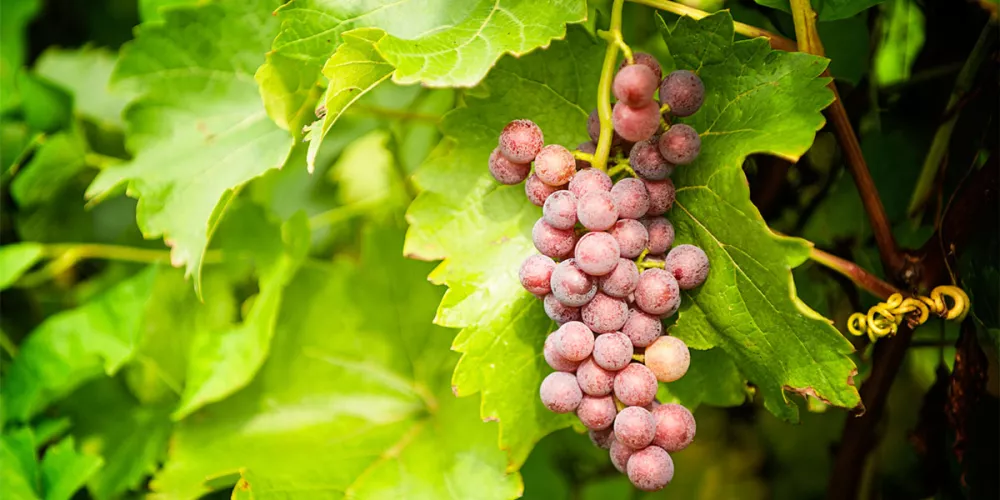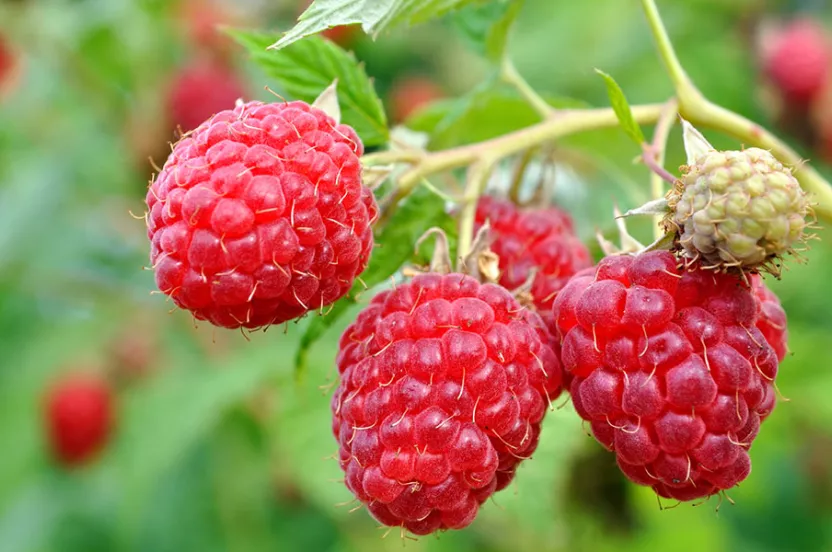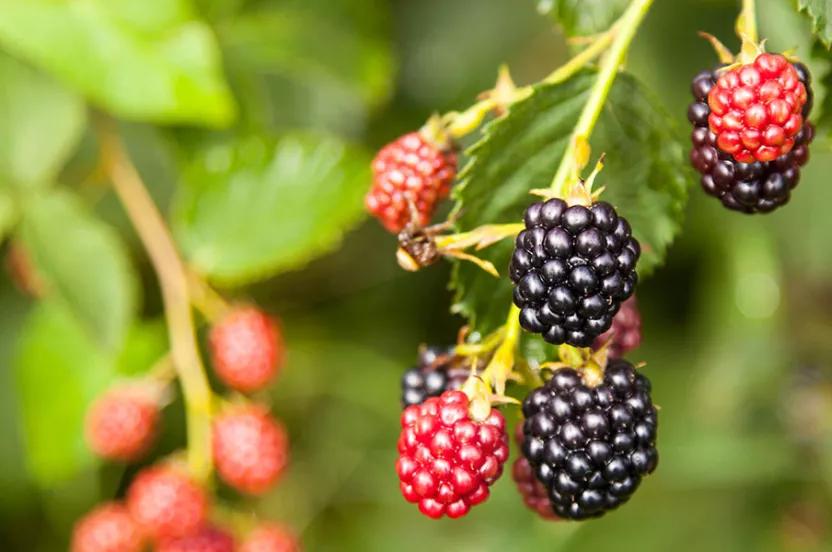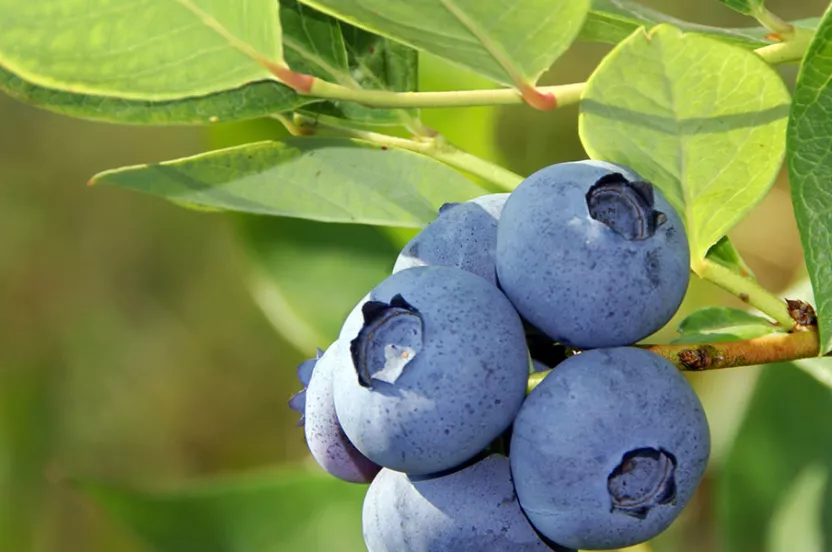Now live: The 2025 Canopy Report. Learn how Americans see trees. GET THE REPORT
Planting
Grapes Planting & Care Instructions
Concord, Niagara, and Catawba are all native American bunch grapes. The grapes are used for the table, juice, jelly, jam and wine.

For grapes you must be particularly careful to match the type and variety of grape to the site's climate. We recommend that you consult with your local county extension service, local nurseries, or gardening neighbors for the best selections for your area.
How to Plant, Care, Prune and Harvest
Site Selection
Site Selection for Grape Vines
- Light: Full Sun
- Soil: Prefer a deep, acidic (low pH 5.0-6.5), well drained, sandy soil, but they tolerate a wide range of soil types except alkaline and wet. Organic matter content should range between 4-5 percent, but a highly fertile soil is not recommended. If the soil is too fertile, the vine grows too fast and doesn't bear well. If possible, do a soil test and amend the soil before planting.
- Pollination: Self-Pollinating
- Orientation: North-south rows maximize sun exposure. Northeast-southeast rows reduce sunburn problems in warm climates. The vines need full sun, because sunlight plays a major part in fruit sugar development. North-south rows maximize sun exposure. Northeast-southeast rows reduce sunburn problems in warm climates.
- Other important considerations: Grape vines have a large leaf surface and are susceptible to fungal diseases. Good air circulation is important. Grapes like to be planted on a slope to help keep air moving and to prevent frost from settling. The best slope is to the east or southeast, but a south or southwest slope is also good. Planting parallel to prevailing winds increases air circulation. Protect from severe wind.
How to Plant Grape Vines
For best results, plant your grape vines in the spring. Once your plants arrive, plant them immediately. If you cannot plant immediately, keep new arrivals cool and roots moist. To keep cool, it is recommended that you store in refrigerator or cool place.
Keep new arrivals cool and roots moist. Rehydrate the roots by soaking in water for a few hours just before planting, Have your vine supports in place before planting. You can use a stake if no other support is available. Dig a wide, deep hole, so roots can be spread out completely. Cut off broken roots. Plant at the same depth as in the nursery, 6'-8' apart. Insert the stake carefully, so you do not injure the roots. Right after planting, prune back to the best cane with 2-3 healthy, living, fat buds (nodes). After the danger of spring frost is over and shoot growth begins, remove all but two of the strongest shoots. Remove all the flower clusters this first growing season. The goal in the first year is to establish the plant with strong roots and a straight trunk. Water after planting.
For best results plant your grape vines in early spring. Once your plants arrive plant them immediately. If you can’t plant immediately keep new arrivals cool and roots moist. To keep cool it is recommended that you store in refrigerator or cool place.
- Unpack and Soak: Unpack grape vine and soak in water for 3 to 6 hours just before planting.
- Cut Broken Roots.
- Dig Hole(s): The width of the hole should allow you to spread roots. If you are planting multiple grape vines dig holes 6'-8' apart.
- Spread Roots in Hole
- Shovel Dirt Back in Hole.
- Water: Give each plant 1"-2" of water. The plants are rather shallow rooted, so moisture needs to be at the surface. Do not let soil become dry to a depth of 6".
Watering Your Grape Vines
Water regularly the first year about 1" a week. Directly moisten the roots. Do not spray or mist. After the vines are established, they seldom need watering. Overwatering causes leaves to drop. Mulching is not necessary after the vines are established.
How to Fertilize Grape Vines
The fertilizer requirements of bunch grapes can vary widely depending upon vine vigor and crop size. This makes it difficult to give generalized recommendations. Young vines may not need any fertilizer for the first two to three years. Apply only when vines appear to need it and only in early spring. Excess nitrogen can cause plants to become vegetative and not flower. Too much fertilizer can also cause possible winter damage and delay the coloring and ripening of fruit. If fertilizing is necessary, apply a small amount of 10-10-10 fertilizer two to three weeks after planting, keeping it one foot away from the vine's base. Increase the amount in the following years before bud swell in the spring. Test the soil periodically (3-5 years) and keep soil pH at 5.0-7.0.
How to Control Weeds Around Your Grape Vine
Eliminate weed competition prior to planting if possible. Weed around the plant base. Hand pull or hoe out weeds. Cultivation is better than mulching in cool climates, because grapes need warm soil to grow well. Grape vines are very sensitive to weed killers and garden chemicals.
How to Prune Grape Vines
Pruning maintains the vine's form, size, vigor, and next season's fruiting wood. Pruning should be done when the vines are dormant in late winter or early spring. Do not prune when vines freeze, because they are brittle and can damage easily. Grape vines produce more wood than necessary. Typically 70-90 percent of the new growth is removed on a mature vine. Leave 3-4 buds per foot of cordon length (horizontal trunk on the vine). Balanced pruning means balancing next season's crop with last season's growth by judging how many buds to leave during pruning. Balanced pruning involves only wood produced during the previous growing season. Wood two years and older is not counted or pruned annually in this system.
Leaves around the grape clusters can be removed to expose the fruit to sunlight in a short growing season. Keep the grapes picked and prunings removed to prevent overwintering of insect larvae.
How to Protect Your Grapes from Wildlife
Birds love grapes. Netting is the most effective solution to prevent birds from consuming your crop. Net the grapes when they begin to change color. The grapes provide food for other wildlife, including squirrels, rabbits, raccoons, foxes, and opossums. The vines provide cover and nesting sites, and deer may browse the leaves and stems. Yellow jackets are attracted to the rotting fruit, so remove it promptly. Watch out for snakes that can hang among the vines.
Harvesting Your Grapes
American grapes are a late ripening crop – Concord in late September, Niagara mid-season in August-September, and Catawba in late September-October. Grapes change color several weeks before they reach maximum sweetness, so let the grapes hang. Table grapes are left on the vine longer than wine grapes. Near harvest, the cluster stems turn brown and woody. The seeds turn from green to brown when the grapes are ripe. Taste the grapes to determine if they are sweet enough to harvest. Pick grapes on a dry day, because wet grapes do not store well. Cut a complete cluster leaving a small "handle" of stem. Handle the grapes as little as possible to avoid rubbing off the powdery gray blush on the fruit for a longer storage life. Do not pile the harvest too deep to avoid crushing the fruit. Refrigerated grapes keep one to two weeks.
How to Protect Your Grapes from the Winter
- Select adapted, hardy varieties
- Grow multiple trunks
- Mound up soil around the base of the vine. Be sure to cover any grafted part. and/or
- Train the vines to a support system that will allow them to be easily removed.
- In fall, after leaves drop and vines are dormant, prune the vines leaving a few extra buds in case of cold damage.
- Release the vines and gently bend to lie on the ground.
- Completely bury the vines with dirt, straw, snow. Soil is best if rodents are a problem.
- In spring before buds swell remove the covering and return vines to the support system.
- Tie vines back onto the support system.
- Don't dig up what appears to be winter killed vines too soon. The roots might survive and send up new shoots.


